Photo
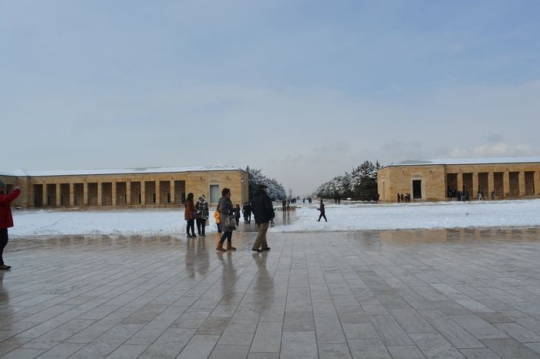
Questionable Resistance
Mr. Guarracino’s insistence on finding evidence of resistance was misguided, given the circumstances. Despite his efforts, it was clear that no meaningful defense was mounted against the regular troops. The villagers sought refuge in another church located in a vulnerable position, making any defense impossible. Upon examination, it was evident that this church lacked the necessary features for defense, such as loopholes or scaffolding for firing over the walls.
Inadequate Shelter
The churchyard was surrounded by high walls that offered some shelter but prevented any effective counterattack. The church itself had only two small windows that could potentially be used for firing, but there was no evidence of scaffolding to enable such action. It seemed unlikely that any shots were fired from this church, given its unsuitable layout for defense Guided Turkey Tours .
Misguided Attempts
Despite the villagers’ refusal to admit to resistance, Mr. Guarracino persisted in trying to fabricate a narrative of defiance. He pressured and intimidated them, labeling them as insurgents and blaming them for their own plight. Additionally, the testimony of the Armenian girl indicated that the majority of the men fled the church under the cover of night, further suggesting that no organized defense was planned or executed against the regular troops.
In essence, the villagers’ actions, including seeking refuge in an indefensible church and the subsequent flight of the majority of the men, provide compelling evidence that they had no intention of resisting the regular troops. Mr. Guarracino’s attempts to portray them as insurgents were unfounded and only served to distort the truth of the situation.
0 notes
Photo
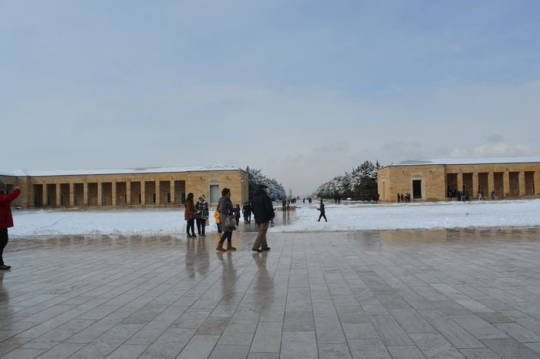
Exchange of Valuable Gifts
Sultan Mahmut I reciprocated the valuable throne received from Nadir Shah with a dispatch of highly valuable gifts. Among these gifts was the renowned “Topkapi Khanjar,” which was sent through the mission led by Kesriyeli Ahmet Pasha.
Sultan’s Decree for Mission
Upon the return of envoy Mustafa Nazif Efendi to Istanbul, he briefed Sultan Mahmut I about the gifts exchanged. In response, Sultan Mahmut I issued a decree assigning Kesriyeli Ahmet Pasha and his mission to Iran, accompanied by exceptionally valuable gifts described as unparalleled Istanbul Private Tours Mevlevi.
Detailed Account by Izzi Suleyman Efendi
Izzi Suleyman Efendi, the private historian to Sultan Mahmut I, provided a detailed account of the incident. He described how a committee was formed to determine the gifts to be sent in exchange for the highly valuable throne. Izzi elaborated on the evaluation process of treasury items, highlighting the meticulous procedures followed.
Evaluation and Documentation
The gifts earmarked for Iran were presented to the Sultan by a committee in the Audience Hall. Under the supervision of this committee, the Chief Jeweller of the Palace, Chief Doorkeeper of the Covered Market, and other officials evaluated the gifts and fixed their prices. A register was maintained for these gifts, and the Chief Doorkeeper of the Treasury was tasked with packaging them and sealing the envelopes under the oversight of the Grand Vizier.
Symbolic Commentary
In addition to documenting the evaluation process, the register book contained a noteworthy commentary emphasizing the symbolic significance of the priceless gifts. It likened these gifts to drops in the sea when compared to the grandeur and authority of the Ottoman State.
Through Izzi Suleyman Efendi’s detailed account, we gain insight into the meticulous procedures and symbolic significance associated with the exchange of valuable gifts during Sultan Mahmut I’s reign.
0 notes
Photo
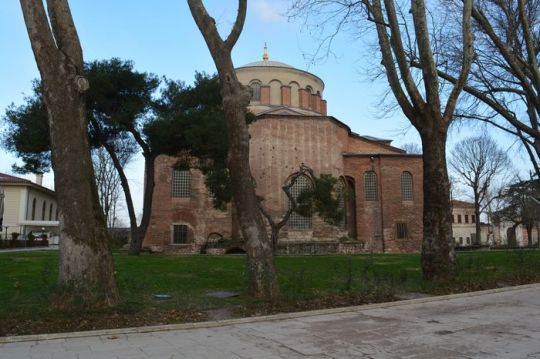
Economic Burdens and Rising Unrest
The heavy taxation imposed on the agricultural population, often reaching up to twenty or thirty percent, placed significant financial strain on the villagers. These taxes, subject to the whims of tax collectors, were suddenly doubled, leading to further hardships, forced sales of property, and escalating tensions between villagers and tax collectors.
Taxation Woes
The abrupt demand for advance payment of taxes for 1876 exacerbated the villagers’ plight, resulting in more forced sales, extortion, and clashes with tax collectors. This economic turmoil fueled discontent and prompted secret gatherings among the young men of the village.
Seeds of Rebellion
Inspired by the independence movements in neighboring regions like Bosnia, Herzegovina, Montenegro, and Servia, the young men of the village began discussing plans to overthrow Turkish rule and assert their own independence. Despite being far from a coordinated uprising Tour Packages Bulgaria, these discussions marked the early stages of what would later become known as the insurrection.
External Influence
Contrary to Turkish and diplomatic assertions, the insurrection in Panagurishti was not incited by external forces like Russians or Servians. Instead, it was driven by local Bulgarians, some of whom were studying or working in Bucharest. These individuals, comprising the Insurrectional Committee, played a pivotal role in organizing and fueling the rebellion.
Raika’s Innocence
Raika, despite her prominent position in the village, had no involvement in inciting the rebellion. Her first inkling of the brewing unrest came during a surprising encounter at a supposed school committee meeting. Instead of the usual attendees, she found herself amidst young men listening to a fervent speech advocating for rebellion, delivered by a mysterious figure named Bankovsky.
The seeds of rebellion sown in Panagurishti were rooted in economic hardship and discontent among the villagers. While external influences were minimal, local grievances and aspirations for independence drove the nascent insurrection. Raika’s inadvertent involvement serves as a testament to the tumultuous times and the complex dynamics at play in rural Bulgaria during this period of unrest.
0 notes
Photo

Economic Burdens and Rising Unrest
The heavy taxation imposed on the agricultural population, often reaching up to twenty or thirty percent, placed significant financial strain on the villagers. These taxes, subject to the whims of tax collectors, were suddenly doubled, leading to further hardships, forced sales of property, and escalating tensions between villagers and tax collectors.
Taxation Woes
The abrupt demand for advance payment of taxes for 1876 exacerbated the villagers’ plight, resulting in more forced sales, extortion, and clashes with tax collectors. This economic turmoil fueled discontent and prompted secret gatherings among the young men of the village.
Seeds of Rebellion
Inspired by the independence movements in neighboring regions like Bosnia, Herzegovina, Montenegro, and Servia, the young men of the village began discussing plans to overthrow Turkish rule and assert their own independence. Despite being far from a coordinated uprising Tour Packages Bulgaria, these discussions marked the early stages of what would later become known as the insurrection.
External Influence
Contrary to Turkish and diplomatic assertions, the insurrection in Panagurishti was not incited by external forces like Russians or Servians. Instead, it was driven by local Bulgarians, some of whom were studying or working in Bucharest. These individuals, comprising the Insurrectional Committee, played a pivotal role in organizing and fueling the rebellion.
Raika’s Innocence
Raika, despite her prominent position in the village, had no involvement in inciting the rebellion. Her first inkling of the brewing unrest came during a surprising encounter at a supposed school committee meeting. Instead of the usual attendees, she found herself amidst young men listening to a fervent speech advocating for rebellion, delivered by a mysterious figure named Bankovsky.
The seeds of rebellion sown in Panagurishti were rooted in economic hardship and discontent among the villagers. While external influences were minimal, local grievances and aspirations for independence drove the nascent insurrection. Raika’s inadvertent involvement serves as a testament to the tumultuous times and the complex dynamics at play in rural Bulgaria during this period of unrest.
0 notes
Photo

Struggling with Impartiality
My resolve to maintain impartiality in my investigation has swiftly evaporated, giving way to a rising tide of emotion. The horrors I’ve encountered defy judicial detachment. Some truths, upon realization, incite an angry surge of blood and provoke visceral reactions. Certain realities are too grotesque for calm scrutiny, evoking a visceral recoil and a refusal of the mind to dwell on them. These are the realities I’ve encountered in my investigation.
Overwhelmed by Horrors
My initial inquiries have already revealed more than enough to draw conclusions. The forthcoming statistical data from Mr. Baring and Mr. Schuyler will likely suffice. The admitted atrocities, acknowledged even by those sympathetic to the Turks and the Turks themselves, paint a grim picture. The burning of 60 or 70 villages, the slaughter of some 15,000 individuals, predominantly women and children, are staggering figures. The gruesome details of unspeakable acts perpetrated against women and defenseless children, relayed not just by Bulgarians but also by various consuls, German officials, Greeks, Armenians, priests, missionaries, and even Turks, render further investigation redundant Turkey Sightseeing.
Accepting the Grim Reality
Confronted with such widespread and corroborated horror, I find it unnecessary to delve deeper. The enormity and unanimity of the accounts leave little room for doubt or skepticism. The evidence is overwhelming, and the urgency to address these atrocities becomes paramount. Further investigation would only serve to exacerbate the anguish without significantly altering the grim reality that demands immediate attention and action.
0 notes
Photo
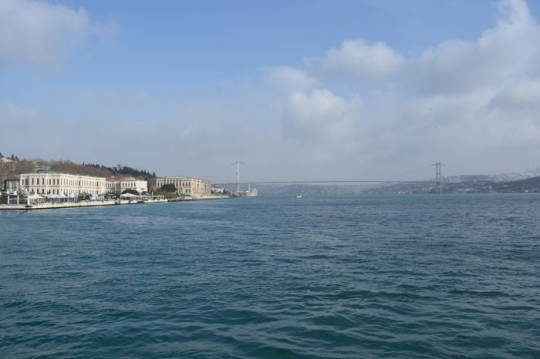
Soviet Influence and Systematic Imitation
Elections and Opposition Suppression
All “elections” in Bulgaria now mirror the Soviet model, where a single ballot list is presented by the Communist Party and government. Opposition is prohibited and treated as sedition, entirely resembling the Soviet electoral system.
Full-Scale Sovietization (Since 1947)
Bulgaria has undergone complete Sovietization. The Communists, in December 1947, introduced a constitution of their own making, with plans for a new one even more closely mirroring the Soviet Constitution. Every aspect of life is organized following the Soviet pattern, with the Communist Party being the sole source of power. The Party structure closely mimics the Soviet model, featuring a Central Committee, the Politbureau, and the Secretariat.
Alignment with Moscow’s Policies
The Bulgarian Communist Party consistently aligns its stance with Moscow’s directives. Notably, when Soviet publications praised Stalin as a “genius-like father of the nations,” Bulgarian Red newspapers echoed the same accolades. Similarly, as soon as the Soviet press denounced the “personality cult,” the Sofia press propagated the same message Guided Istanbul Tours.
Soviet-Inspired Administrative System (Since March 1959)
The administration of the country now operates through provincial, district, and city councils known as “People’s Soviets of the Workers,” resembling the administrative structure in the USSR. This system, introduced in March 1959, is a direct replication of the “decentralization” scheme implemented in the Soviet Union in December 1957.
Military Adherence to Soviet Practices
In the military, the Bulgarian Communists have adopted the divisional system used in the Soviet armed forces. Training methods mirror those of the Red Army, and weapons and equipment are of Soviet origin. The Bulgarian high command consists of Communists who spent their entire lives in the USSR, with many holding commissions in the Red Army during World War II.
0 notes
Photo
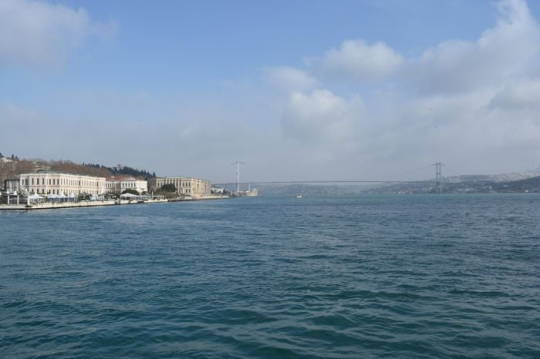
Soviet Influence and Systematic Imitation
Elections and Opposition Suppression
All “elections” in Bulgaria now mirror the Soviet model, where a single ballot list is presented by the Communist Party and government. Opposition is prohibited and treated as sedition, entirely resembling the Soviet electoral system.
Full-Scale Sovietization (Since 1947)
Bulgaria has undergone complete Sovietization. The Communists, in December 1947, introduced a constitution of their own making, with plans for a new one even more closely mirroring the Soviet Constitution. Every aspect of life is organized following the Soviet pattern, with the Communist Party being the sole source of power. The Party structure closely mimics the Soviet model, featuring a Central Committee, the Politbureau, and the Secretariat.
Alignment with Moscow’s Policies
The Bulgarian Communist Party consistently aligns its stance with Moscow’s directives. Notably, when Soviet publications praised Stalin as a “genius-like father of the nations,” Bulgarian Red newspapers echoed the same accolades. Similarly, as soon as the Soviet press denounced the “personality cult,” the Sofia press propagated the same message Guided Istanbul Tours.
Soviet-Inspired Administrative System (Since March 1959)
The administration of the country now operates through provincial, district, and city councils known as “People’s Soviets of the Workers,” resembling the administrative structure in the USSR. This system, introduced in March 1959, is a direct replication of the “decentralization” scheme implemented in the Soviet Union in December 1957.
Military Adherence to Soviet Practices
In the military, the Bulgarian Communists have adopted the divisional system used in the Soviet armed forces. Training methods mirror those of the Red Army, and weapons and equipment are of Soviet origin. The Bulgarian high command consists of Communists who spent their entire lives in the USSR, with many holding commissions in the Red Army during World War II.
0 notes
Photo

The Fall of Communism in Bulgaria November 10 1989
The Palace Coup of November 10, 1989
Assisted by the Soviet Embassy, the leadership of the Bulgarian Communist Party orchestrated significant changes within their ranks. On November 10, 1989, a party plenum released Todor Zhivkov from his position as General Secretary of the Central Committee. Zhivkov, feeling aged and weakened, opted not to engage in another strenuous battle for power.
Quote:
“Look at me – I march on.
Not with the swing and shiver of a victory march
Not along a route lined solemnly,
Not under a rain of flowers.”
Excerpt from ‘In Spite of Everything’ by Bogomil Rainov (b. 1919), translated by Roy MacGregor-Hastie
Subtitle 2: The Years of Democracy: 1990 and Beyond City Tours Istanbul.
Questioning 45 Years of Rule
The events of November 10, 1989, marked a “palace coup” orchestrated by the Communist Party leadership to retain control over state governance. This change was heavily influenced by the Soviet Union. Todor Zhivkov was replaced as the party leader and President of the State Council by Petar Mladenov, a Soviet-educated figure who had served as Foreign Minister and been a long-standing member of the Political Bureau of the Central Committee of the Bulgarian Communist Party (BCP). In January 1990, Andrei Loukanov, another Soviet-trained individual with a history as a minister and representative of the communist elite, assumed the position of Prime Minister. Both leaders emphasized that the Bulgarian “restructuring,” following the example of the Soviet “perestroika,” should focus on transforming and improving the existing system, and the process should be led by the Communist Party.
November 10, 1989, witnessed a significant shift in Bulgaria’s political landscape, as the Communist Party leadership executed a “palace coup,” paving the way for changes and opening the door to a new era of democracy.
0 notes
Photo
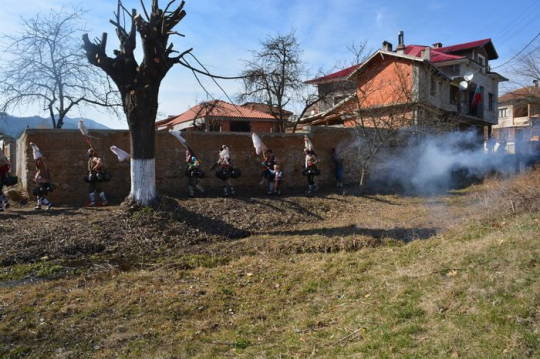
Current Struggles in Bulgarian Villages
The Perils of Daily Life
This article delves into the contemporary challenges faced by Bulgarian villagers, highlighting a pattern of systematic exploitation, pillaging, and abuse. From economic hardships to egregious assaults, the rural population grapples with a harsh reality that demands urgent attention.
A Stolen Livelihood
The first section exposes a troubling aspect of the villagers’ plight — the confiscation of their cattle and horses. This not only disrupts their means of livelihood but leaves them vulnerable to further exploitation. The article explores the ramifications of resisting this seizure, revealing a cycle of violence and oppression.
The Brutal Consequence
Examining the consequences of resistance, the article reveals a disturbing pattern of beatings and sabre attacks against those who dare to voice complaints or resist the pillaging of their possessions. This section sheds light on the harsh reprisals faced by villagers who attempt to stand up against the oppressors Bulgaria Tour.
Women as Targets
The narrative takes a harrowing turn as it exposes the blatant and open assaults on the dignity of women in these villages. Instances of women being seized and outrageously violated come to the forefront. The article emphasizes the urgent need to address this egregious violation of basic human rights.
Begging for Livelihood
A shift in focus to the economic struggles of villagers is highlighted as the article recounts a visit to Kritchina. Villagers from Tchanaktchi approached, desperately seeking financial assistance to repurchase their cattle from Turks who demanded payment for their return. This section underscores the economic coercion and desperation faced by the rural population.
Exploitation in Plain Sight
The plight of another village, unnamed but recognized by authorities, is unveiled. Villagers are only permitted to harvest their crops under the condition that half of the yield is surrendered to Turkish neighbors. This practice of economic exploitation, occurring within a short distance of Philippopolis, is dissected to expose the extent of the villagers’ economic subjugation.
Urgent Appeals for Intervention
The article concludes by emphasizing the urgency of addressing the multifaceted challenges faced by Bulgarian villagers. It calls for international intervention, advocacy, and a collective effort to curtail the ongoing abuses, ensuring that these rural communities are no longer subjected to economic extortion, violence, and assaults on their dignity.
A Call for Justice and Empowerment
In a final reflection, the article echoes the cries of the villagers, urging the global community to stand in solidarity, advocate for justice, and empower these communities to break free from the shackles of exploitation and abuse.
0 notes
Photo
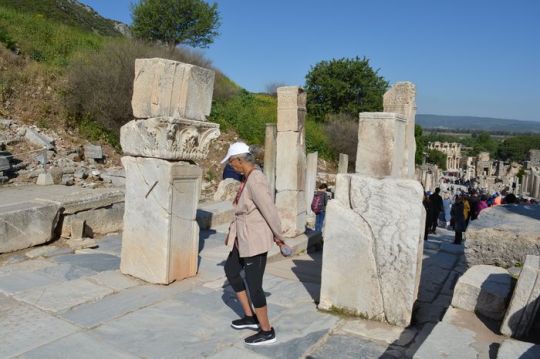
Amidst Beauty and Ruin
Traversing the Charmed and Scarred Landscape of Otluk-kui
The Lush Oasis Within Desolation Houses and Gardens
As one traverses the remnants of Otluk-kui, a village steeped in tragedy, the juxtaposition of comfort and destruction becomes a haunting testament to the resilience of the human spirit amidst adversity. The houses, though now bearing the scars of the recent horrors, once stood as symbols of comfort and solidity. These well-constructed abodes, partly surrounded by gardens and fruit trees, created a picturesque setting where luxuriant foliage hung over walls, offering a charming freshness that now serves as a poignant contrast to the blackened ruins.
The gardens, once vibrant with life, have become silent witnesses to the atrocities that unfolded. The juxtaposition of the verdant greenery against the backdrop of destruction is a visual representation of the dichotomy that defines Otluk-kui—a village that was both a haven of beauty and a theater of horrors. The haunting charm that once emanated from these gardens is now overshadowed by the ghostly echoes of the past.
Saddling Horses, Muffling Cries Journeying to Avrat-Alan
The next chapter of our exploration unfolded as we mounted horses in Otluk-kui, eager to leave behind the haunting scenes etched into the village’s history. The horses, symbols of mobility and escape, were brought to us around one o’clock. Amidst a crowd of onlookers, we embarked on a journey toward Avrat-Alan, also known as Kuprishstitza in Bulgarian—a destination nestled a few miles to the north Travel Bulgaria, higher up in the mountains.
The act of mounting horses, typically a symbol of adventure and exploration, took on a somber tone as the mournful cries of the gathered crowd accompanied our departure. Their cries, laden with the weight of sorrow and perhaps a plea for remembrance, followed us, compelling even the riders to shield their ears from the haunting sounds. The departure from Otluk-kui became a symbolic transition from a place marred by tragedy to the anticipation of what lay ahead in the higher reaches of the mountains.
The journey to Avrat-Alan, set against the backdrop of the desolation left in Otluk-kui, becomes a narrative thread that weaves through contrasting landscapes—from the lush charm of a village ravaged by horror to the promise of new vistas higher up in the mountains. The horses, though serving as mere means of transportation, carried with them the echoes of Otluk-kui’s sorrow, marking the beginning of a transformative expedition through landscapes scarred and untouched.
0 notes
Photo
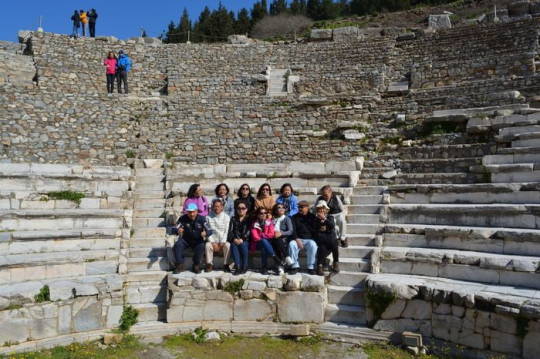
Parts of Women’s apparel
There was not a roof left, not a whole wall standing; all was a mass of ruins, from which arose, as we listened, a low plaintive wail, like the “ keening ” of the Irish over their dead, that filled the little valley and gave it voice.
We had the explanation of this curious sound when we afterwards descended into the village. We looked again at the heap of skulls and skeletons before us, and we observed that they were all small, and that the articles of clothing, intermingled with them and lying about, were all parts of women’s apparel.
These, then, were all women and girls. From my saddle I counted about a hundred skulls, not including those that were hidden beneath the others in the ghastly heap, nor those that were scattered far and wide through the fields. The skulls were nearly all separated from the rest of the bones, the skeletons were nearly all headless Guided Istanbul Tours.
Monotonous Chant
These women had all been beheaded. We descended into the town. Within the shattered walls of the first house we came to was a woman sitting on a heap of rubbish, rocking herself to and for, wailing a kind of monotonous chant, half sung, half sobbed, that was not without a wild discordant melody. In her lap she held a babe, and another child sat beside her patiently and silently, and looked at us as we passed with wondering eyes.
She paid no attention to us; but we bent our ear to hear what she was saying, and our interpreter said it was as follows :— “ My home, my home, my poor home, nay sweet home; my husband, my husband, my poor husband, my dear husband ; my home, my sweet home’ and so on, repeating the same words over and over again a thousand times. In the next house were two, engaged in the same way; one old, the other young, repeating words nearly identical, “ I had a home, and now I have none ; I had a husband, and now I am a widow; I had a son, and now I have none ; I had five children, and now I have one,” while rocking themselves to and fro, beating their heads and wringing their hands.
0 notes
Photo

Zwatko Boyadjieff
In another place we were shown a black spot where an old blind man, Dondje Stregleyoff, was beaten half to death, and then thrown senseless on a heap of wood and burnt alive.
There was an old man here, Zwatko Boyadjieff by name, a public benefactor, a liberal contributor to the school fund, who in winter supported half the widows and orphans of the place, who was renowned for his charities to Christian and Turk alike. He was likewise seized, tortured, and maltreated.
His eyes were put out, and, after undergoing the most fearful torments, he was thrown on a heap of wood fainting or dead, the people do not know which, and burnt. They seized the priest Nestor, and cut off his fingers one by one to extort money, and as the poor man had none to give them they continued by cutting off his hands, and finally his head. We were shown in the yard of a neat little cottage, embowered in trees, a grave, beside which a woman was kneeling as we passed.
It was the grave of a young man of eighteen, who had just returned home from school when the troubles began, after an absence of two years, and who had taken no part in the outbreak. They had seized him, and in mere sport cut off his hands one by one in the presence of his mother, then killed him Turkey Sightseeing.
What made these acts more terrible was, that many of them were committed in the presence of the weeping relatives—wife, mother, brothers, sisters of the victims. And they were repeated by the hundred. It would take a volume to tell all the stories that were related to us. But it was not only old and young men who suffered; women, young girls, children, infants, were ruthlessly slaughtered.
These Turks have no pity, no compassion, no bowels. They have not even the pity of wild beasts. Even the tiger will not slay the young of its own species. But these Turks, these strong bearded men, picked infants up out of their cradles with their bayonets, tossed them in the air, caught them again, and flung them at the heads of the shrieking mothers.
0 notes
Photo
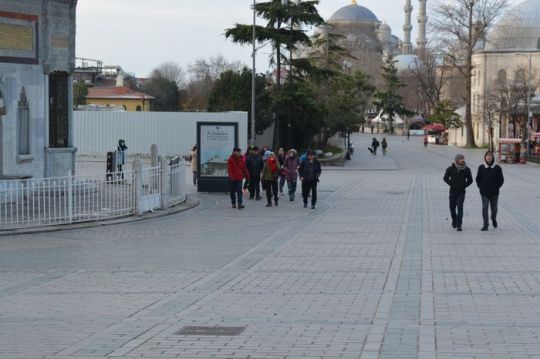
Zwatko Boyadjieff
In another place we were shown a black spot where an old blind man, Dondje Stregleyoff, was beaten half to death, and then thrown senseless on a heap of wood and burnt alive.
There was an old man here, Zwatko Boyadjieff by name, a public benefactor, a liberal contributor to the school fund, who in winter supported half the widows and orphans of the place, who was renowned for his charities to Christian and Turk alike. He was likewise seized, tortured, and maltreated.
His eyes were put out, and, after undergoing the most fearful torments, he was thrown on a heap of wood fainting or dead, the people do not know which, and burnt. They seized the priest Nestor, and cut off his fingers one by one to extort money, and as the poor man had none to give them they continued by cutting off his hands, and finally his head. We were shown in the yard of a neat little cottage, embowered in trees, a grave, beside which a woman was kneeling as we passed.
It was the grave of a young man of eighteen, who had just returned home from school when the troubles began, after an absence of two years, and who had taken no part in the outbreak. They had seized him, and in mere sport cut off his hands one by one in the presence of his mother, then killed him Turkey Sightseeing.
What made these acts more terrible was, that many of them were committed in the presence of the weeping relatives—wife, mother, brothers, sisters of the victims. And they were repeated by the hundred. It would take a volume to tell all the stories that were related to us. But it was not only old and young men who suffered; women, young girls, children, infants, were ruthlessly slaughtered.
These Turks have no pity, no compassion, no bowels. They have not even the pity of wild beasts. Even the tiger will not slay the young of its own species. But these Turks, these strong bearded men, picked infants up out of their cradles with their bayonets, tossed them in the air, caught them again, and flung them at the heads of the shrieking mothers.
0 notes
Photo

Byzantine army near Klokotnitsa
In March 1230 the Bulgarians gained a brilliant victory over the Byzantine army near Klokotnitsa after which got hold of Macedonia, Albania, the Rhodopes and the Aegean. Once again Bulgaria stretched its borders to the shores of three seas…
Dynasty of the Assenids
The indisputable Bulgarian hegemony of South-Eastern Europe made the Pope in Rome get concerned with the future of the Latin Empire. His emissaries instigated the Hungarians to attack Bulgaria from the north but soon this new threat was eliminated by the Bulgarian sword. The consid-erable territorial expansion of the Second Bulgarian Kingdom was followed by peaceful years that led to economic growth. For the first time the Bulgarian king Ivan II Assen initiated the minting of coins…
The Bogomils and other religious movements in Medieval Bulgaria Undoubtedly, the dynasty of the Assenids (1186-1280) prompted the power and the prestige of the Second Bulgarian Kingdom in the European Medieval world. But, of course, its history also knew periods of social and political crises. The incessant growth of private property and the deeper stratifi-cation of the population in the rural commune contributed to the sharpening of the relations between the ranks of the people and the upper strata of the Bulgarian society Tours Bulgaria. In such periods emerged and developed certain social and religious movements. The Bogomil movement distinguished not only by the dualistic religious beliefs – a conception of the two principles: good and evil – but also by political nationalism and resentment of Byzantine culture. Observing the mismatch between words and deeds of the clergy, people started gradually losing faith in the Christian religion. The Bogomils renounced the official church, its symbols and rites, as well as the need for its ministers. They preached rejection of luxury, riches and bodily pleasures; repudiated marriage; renounced violence, war and cruelty.
Bogomil movement
Between the 9th and the 12th century the Bogomil movement penetrated into Byzantium, Serbia, Wallachia, Kievan Russia, and in the centuries that followed it spread to Italy and France. In the Western world the followers of the Bogomil teaching were called Cathars and Albigenses. Later, in the 14th cen-tury also appeared the teaching of the Adamites who claimed that social inequality was not of a divine origin, so they called on people not to wear clothes: like Adam, the first man in Eden. Again in the 14th century under the influence of Byzantium among the Bulgarian monks penetrated Hesychasm [from the Greek hesychazo, e. g. “being silent”] – an ascetic and meditative teaching. Also from Byzantium came the philosophical and religious doctrine of Varlaam and Akindin called Varlaamism which contained many rational elements combined with criticism of the sumptuous and costly church rituals. And, on the eve of Bulgaria’s fall under Turkish subjugation, the heresy of the Jews was quite widespread as well.
0 notes
Photo

PRINCIPAL SIGHTS IN CONSTANTINOPLE
The most remarkable things to be seen are: Mosques—St. Sophia, Ahmedieh, Suleimanieh and Chora Mosques, which are the four principal ones, and of which St. Sophia and Chora are of Byzantine architecture, and the other two Turkish. Other mosques to be seen are—SS. Sergius and Bacchus (St. Sophia the less), Mehmed Pasha’s mosque, Rustem Pasha’s mosque, and the Valid eh mosque, the last three having beautiful tiles.
Tombs—The tomb of Sultan Selim II., of Sultan Mahmud II., of Suleiman the Great, the tomb of Shah-Zadeh, and of Sultan Muhammad II., the Conqueror. Museums —The Imperial Museum of Antiquities, the Church of St. Irene, the Treasury (in the Old Seraglio), the Museum of Ancient Costumes (in the Hippodrome), and Yildiz Palaces and Gardens (see p. 159) Obelisks and Columns. The Obelisk of Theodosius, the Serpent Column, and the Colossus in the Hippodrome, the Porphyry or Burnt Column, Marcian’s Column, the Column of Theodosius II., and the Column of Arcadius. Cisterns—The Philoxenos,
and the Basilica. Walls—The Seven Towers and the Walls of Constantinople. Bazaars—The Grand Bazaar and the Egyptian Bazaar. Processions—The Selamlik, the Procession of the Holy Camel, the Sultan’s procession to the Hirka-i-Sherif Mosque in the old Seraglio every 15th of Ramazan. Excursions—The Golden Horn, the Bosporus, the Forest of Belgrade, the Sweet Waters of Europe, the Sweet Waters of Asia, the Princes’ Islands, and Brusa.
The Bazaars: Shopping.—The bazaars are situated at Stambul private istanbul tour, between the second and third hills, i.e. between the Burnt Column and the Stambul fire tower. They cover an area of several acres, and consist of long, narrow, vaulted streets, roofed by small domes admitting the light through small windows and bull’s-eyes.
Byzantine era
With the exception of the central part called the “ Bezesten,” which dates from the Byzantine era, the bazaars were built by Sultan Bayazid II. about 1500 A.D. They are reached through more than one hundred entrances, and are occupied only in the daytime. The total number of the shops, which are not State property, but are owned by individuals, is about 4000.
Tourists and visitors shopping in the bazaars, or at any of the native shops, should not pay the price asked, as, except at some of the large shops where the prices are fixed, tradesmen are in the habit of asking high prices of strangers. A golden rule is to offer one-third of the prices asked at curiosity shops, and give a little more only when one is sure his firs offer will not be accepted. The prices asked vary according to the amount of notice a customer may bestow on any article shown him. A refusal on the dealer’s part to take the price offered him means nothing, and if a customer leave the shop, he will invariably find the tradesman at his heels, and ready to close with his offer, before he has gone many yards farther on.
Hans.—-These, numbering some 180, are, for the most part, large square buildings enclosing a courtyard, originally erected by different sultans and private individuals, for the accommodation of Turkish and other merchants and travellers. Only men are allowed to dwell in them. A great many European merchants or their agents now have their offices and warehouses in these Hans. The massive iron-plated doors are always closed at sunset and are not opened till sunrise. The two largest Turkish Hans are the Buyuk Yeni Han and Yalideh Han, near the Bazaar and War Office. They suffered considerable damage during the earthquakes of July 1894.
The Selamlik or Sultan’s Procession to the Mosque takes place every Friday about noon. Visitors are allowed to go near the Mosque where the Sultan is to go and see him driving in state, as well as the various troops which come for the parade. It is unnecessary to wait and see him again when he comes out of the Mosque as the time he stays there is uncertain. Tourists can view the whole procession from their carriage, or enter into the courtyard of the Mosque in which the ceremony is going to take place, and thus see hiih and the Palace courtiers as well as the various generals from near.
Dervishes. — Whirling or Dancing Dervishes. The best Mevlevi, or Dancing Dervishes, are to be seen at their convent, 539 Grande Kue, near the Pera terminus of the Underground ltailway. Performance on Fridays, at 8.30 (Turkish time) throughout the year. Entrance 2\ piastres per head (5d.). Visitors are expected to take off their hats. Sticks, umbrellas, and kodaks must be left at the door in charge of the doorkeeper. Sketching or taking notes is not allowed.
This order of Dervishes was founded in 1245 A.D. by Mevlana Jellal-ed-din Muhammad, a descendant of the prophet’s father-in-law, Abu-bekr, 4
Every member has to perform a severe novitiate, lasting 1001 days, before being finally admitted into the order. Their gyrating dance is intended to personify the planetary system revolving round the sun, and is supposed by many to be a survival of Hindu mysteries.
1 note
·
View note
Photo
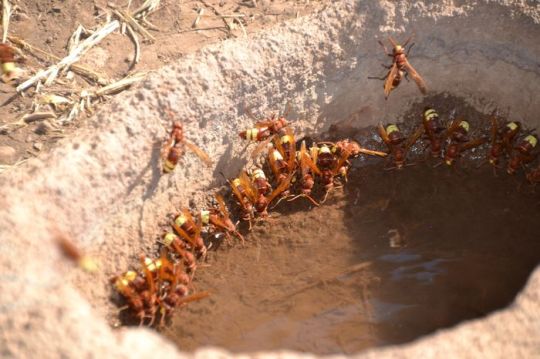
WHY BULGARIA WITHIN THE BYZANTINE WORLD
PREFACE
WHY BULGARIA WITHIN THE BYZANTINE WORLD? For this area of the European space in which the Bulgarians found their homeland, belonged for good and all to a cultural circle setting its profound mark on the fate and culture of all the nations that created states during the Middle Ages.
Bulgaria, established in the seventh century, was all an enemy, an ally, a rival, and a partner of the Eastern Empire we name Byzantium. The seats in the Balkans became the ground of its culture where the Antiquity proceeded to the Middle Ages. There the deep-rooted traditions preserved their triumphs to transform them into an integral part and wealth of the new sovereigns of the territories of the Bulgarians.
Byzantium was the mightiest source of ideas, patterns, model examples and rivalry for the Bulgarians. Captivating its territory from the Empire, the newborn state became related with it, waged wars against it, clashed with it, adopted models in all the spheres of life or freed itself, fell under its impact still searching its friendship, or fought for supremacy. In the course of nearly two centuries (10th – 12th), it fell again within the state and political system of Byzantium as this circumstance enriched it still further on.
This quite complicated picture of the relations between Bulgaria and thousand of years old Empire, enriched by the spirits of its predecessors and the variegated ethno – cultural amalgamation of its heterogeneous population reflected on and can be illustrated by the material and artistic reaching.
Bulgaria belonged actively to the Medieval Christian world and shared its cultural values thanks again to its affiliation to the Byzantine circle. Thus, the territories of the future state of the Bulgarians have preserved till our day the trace of a large-scale development connected with the spread and recognition of the world religion. Temples and monasteries were set up even in the most secret recesses of the Byzantine Balkan provinces between 4th and 7th centuries. Today their ruins spring up from the soil, like St. Sophia in Serdica, the Old Metropolitan Church in Mesambria bulgaria private tours, the Red Church in Perushtitsa, or the basilica in Belovo, to let us appraise this soil as an artistic seat and integral part of the cultural commonwealth of Byzantium.
The sculptural workshops on the Island of Prokonnesos in the Sea of Marmara worked for the decora-tion and furnishing of these elite edifices. The most exquisite pieces of work designed for the imperial constructions of the Capital city of Constantinople were employed as model examples. The light coming from the temple windows swept up the multi-colour mosaics on the floors and inspired life in scenes and images on the walls. The painted tombs in the necropolis of Serdica, the floor mosaic of St. Sophia Church, and the angels on the arches of the Red Church almost two hundred years later outline the course and the achievements of the artistic creation.
0 notes
Photo

Greek colonizers
Balchik is one of the oldest and most beautiful coastal towns with a population of 11,861. It was founded in the 6th century B.C. by Greek colonizers. Its first name was Cruni, meaning spring, owing to the numerous springs around. Balchik existed in Roman times as a seaport and had its own mint. Later it became the possession of the Boyar Balik and bears his name, After the Balkan War of 1912-1913 it came within the boundaries of Romania and was returned to Bulgaria by the Craiova Treaty of September 21, 1940.
The most interesting sight in Balchik is the park belonging to the Palace of Queen Maria of Romania, It is now a botanical garden with 3,000 species of plants, among them a unique collection of cactuses. The Palace rises above the shore and the small church was transferred from the island of Crete, stone by stone. Ancient amphorae, Turkish tombstones and fountains can be seen scattered about in the park,
Hotels: Balchik, three stars, with 68 beds sightseeing turkey; Raketa, two stars, with 36 beds. There is also the Bisser camp site, two stars, with a restaurant, the Tihiya Kut.
Eight kilometres from Balchik towards Varna is Albena, the newest and most picturesque seaside resort on the Bulgarian Black Sea coast. The sea here is clean and shallow and the beach is six kilometres long. There are 40 hotels with a total of 12,750 beds, as well as the camp sites Albena, Ekzotika and International many restaurants and entertainment spots with 10,000 seats, most of these being situated at some distance from the hotels.
There are good sports facilities: volleyball, basketball and tennis courts, golf links, croquet greens, bowling alleys, horse riding, cycling, a yachting club and go-carts. Next to Kardam Hotel is a men’s and women’s tailor, shoemaker’s, watchmaker’s and a dry-cleaning and pressing shop. At the entrance to the resort is the post office, open from 6 a.m. to 10 pm.
Varna, Zlatni Pyassatsi, Drouzhba, Tolbukhin and Balchik
A regular bus service connects it with Varna, Zlatni Pyassatsi, Drouzhba, Tolbukhin and Balchik and a six-seater cutter makes regular trips to Balchik, Kavarna and Kaliakra.
Exhibitions of the works of leading Bulgarian painters, cartoonists and graphic artists are organized in the hotel lobbies. The Miss Albena and the Miss Cherno More beauty contests are held in July and August.
There are several places of entertainment offering interesting programmes and excellent cuisine.
The Zlaten Klass Taverna, next to the Orlov Hotel is open from 11 a.m. to 12 p.m.
The Dobroudja Taverna in the shopping centre, is open from 11.00 a.m. to 12.00 p.m.
The Old House Restaurant in national style, with folk orchestra (near the Dobrich restaurant) is open from 6.00 p.m. to 12.00 pm.
Alberta
Hotels; 1. Gergana 2. Slavourta 3. Moura 4. Elitsa 5. Nona 6. Boryana 11. Ralitsa 13, Kiev 14. Vihren 16. Kom 17. Leipzig 18. Dnepr 19. Neptun 20. Bratislava 21. Karvouna 22. Balik 23. Tervel 24. Kaliopa 25. Orlov 27, Slavyanka 29. Drouzhba 30. Praga 31. Kompas 32 Shabla 33. Orhidea 34. Warshava 35. Kamelia 36, 36. Dorostol 37. Kardam 40. Zvezda 41. Avrora 42. Dobroudja 43, Ka)iakra44. Lovech 45. Zdravets 46. Zomitsa
Gorski Tsar Night Club has a nightly concert programme. Open from 9.00 p.m. to 4.00 a.m.
Arabella Night Club, close to the beach, is open from 9,00 p.m. to 4.00 a m.
Batova Picnic — 18 kilometres from the resort with delicious food and a floor show. Open from 11,00 am fo 12.00 p.m,
Robinson — a picnic ground near Baichik. Interesting programme every day from 10.00 a.m. to 12.00 p.m.
1 note
·
View note